Abstract
Anti-acetylcholine receptor (anti-AChR) antibody characteristics including light chain, IgG subclass, avidity for denervated human acetylcholine receptor and reaction with various human and mammalian AChR preparations were examined in 11 patients who developed myasthenia during penicillamine treatment of rheumatoid arthritis. Results were compared with those already reported in 35 patients with generalized idiopathic myasthenia gravis (MG). We found significant differences in the avidity and the light chain of the anti-AChR. However, anti-AChR characteristics in 12 patients with recent onset (less than 4 months' duration) idiopathic MG did not differ significantly from those in patients with penicillamine-induced MG. In the patients with generalized MG a trend was found towards higher percentage of kappa light chain and higher anti-AChR avidity with duration of disease. Anti-acetylcholine receptor antibodies in penicillamine-induced myasthenia gravis therefore appear to be similar to those of idiopathic myasthenia gravis of recent onset.
Full text
PDF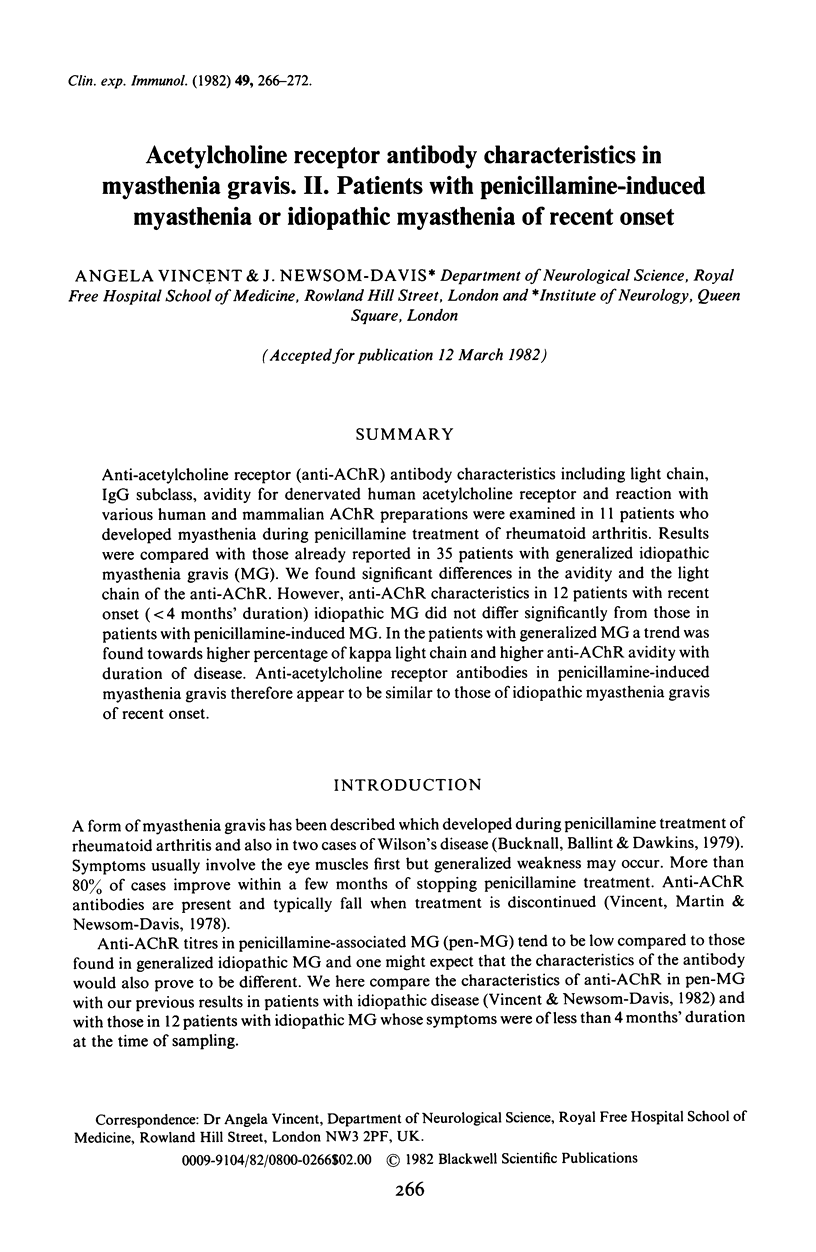
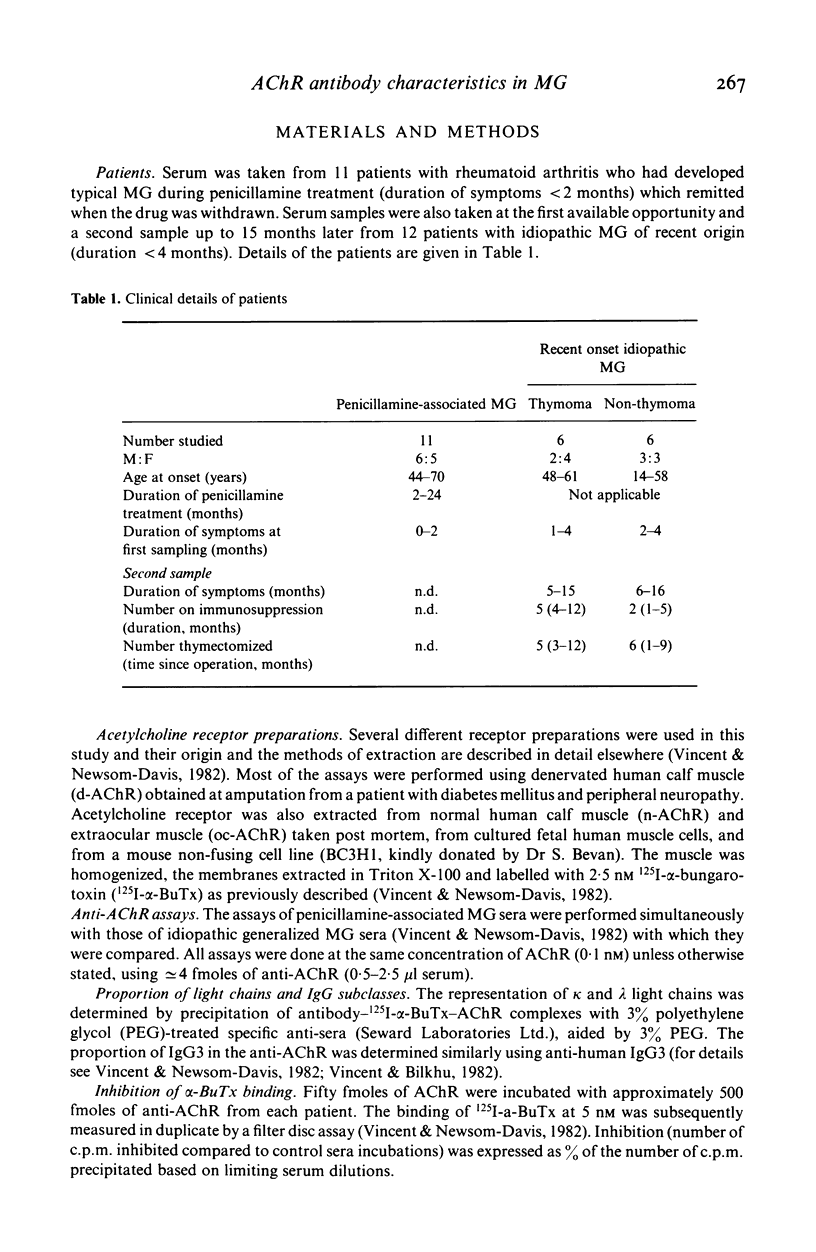
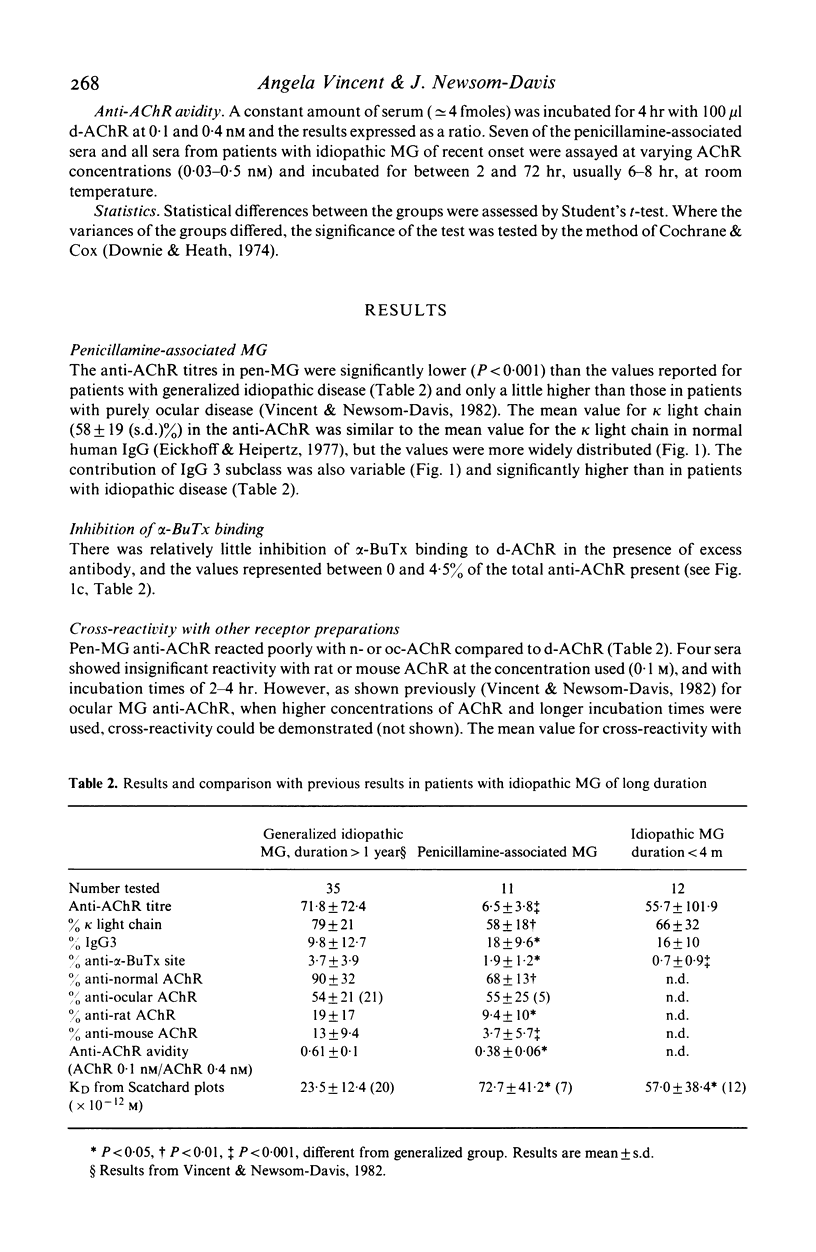
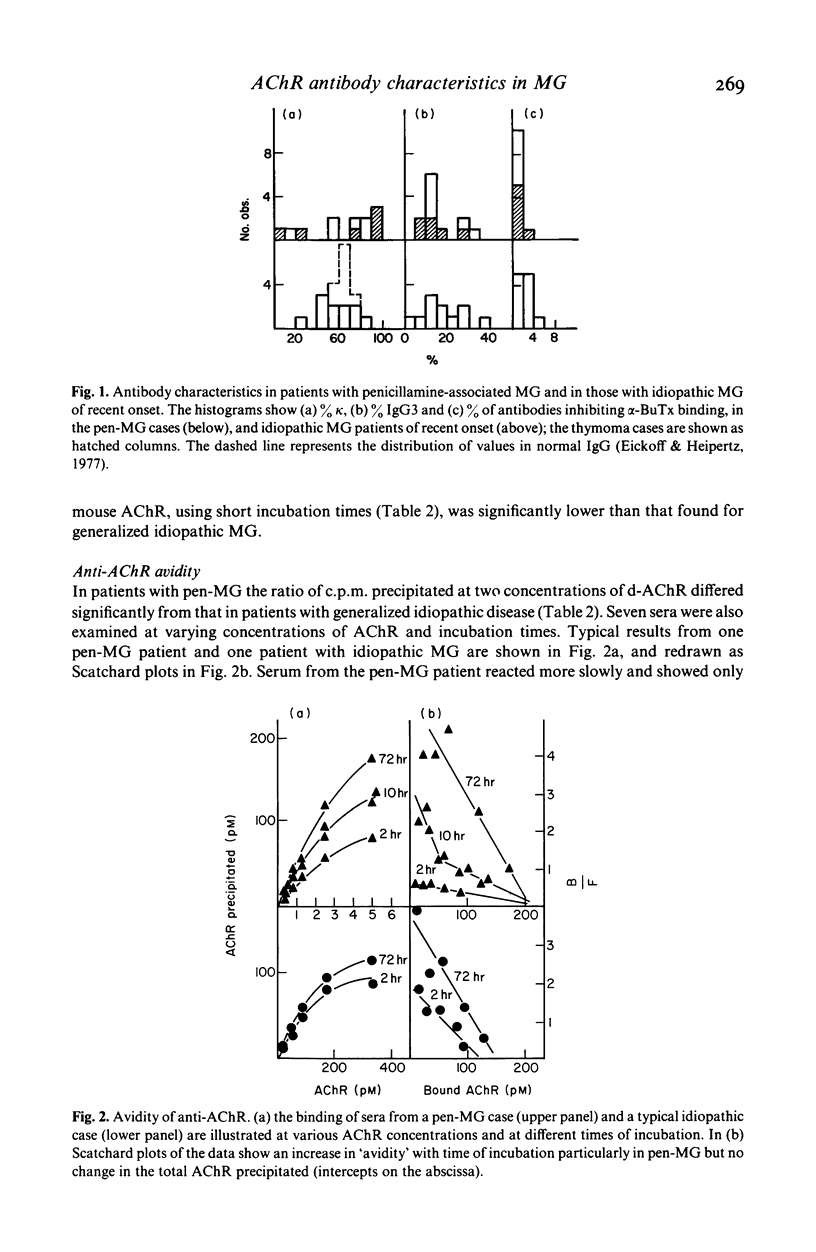
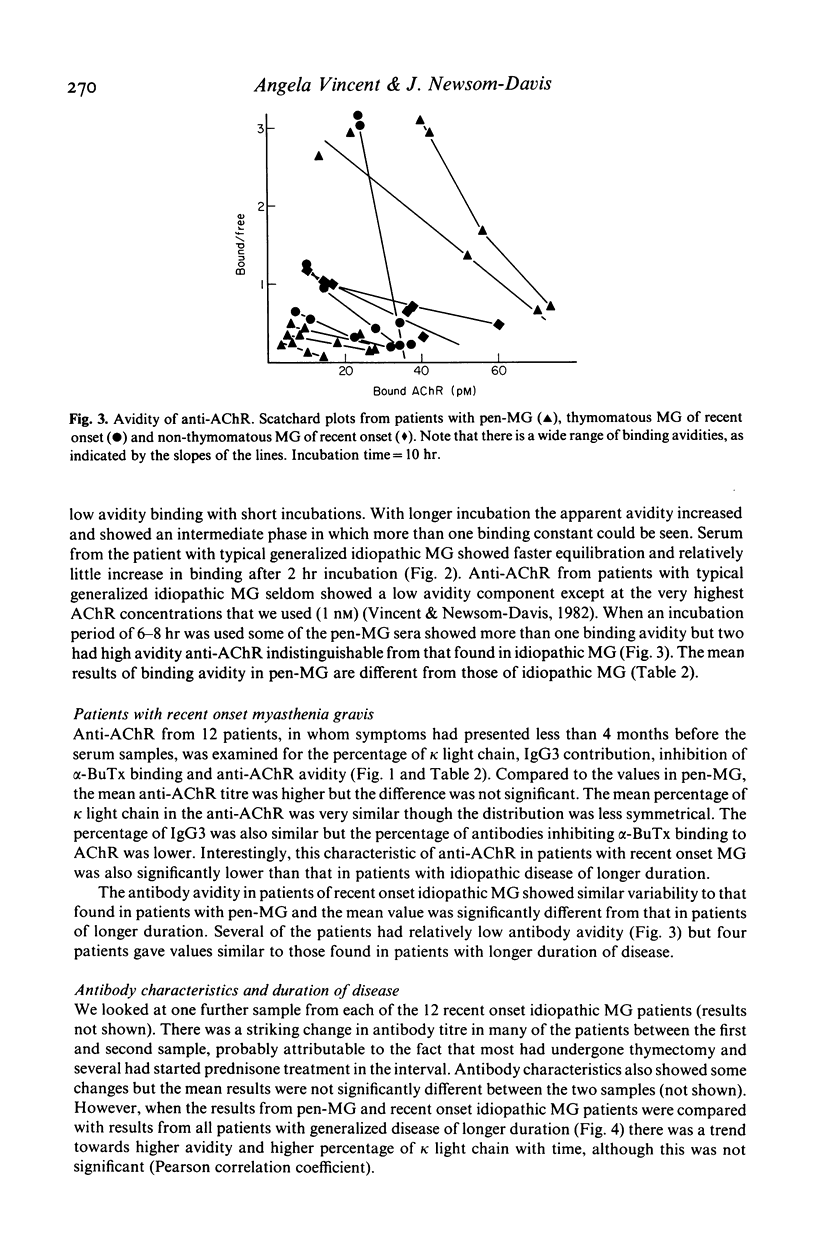
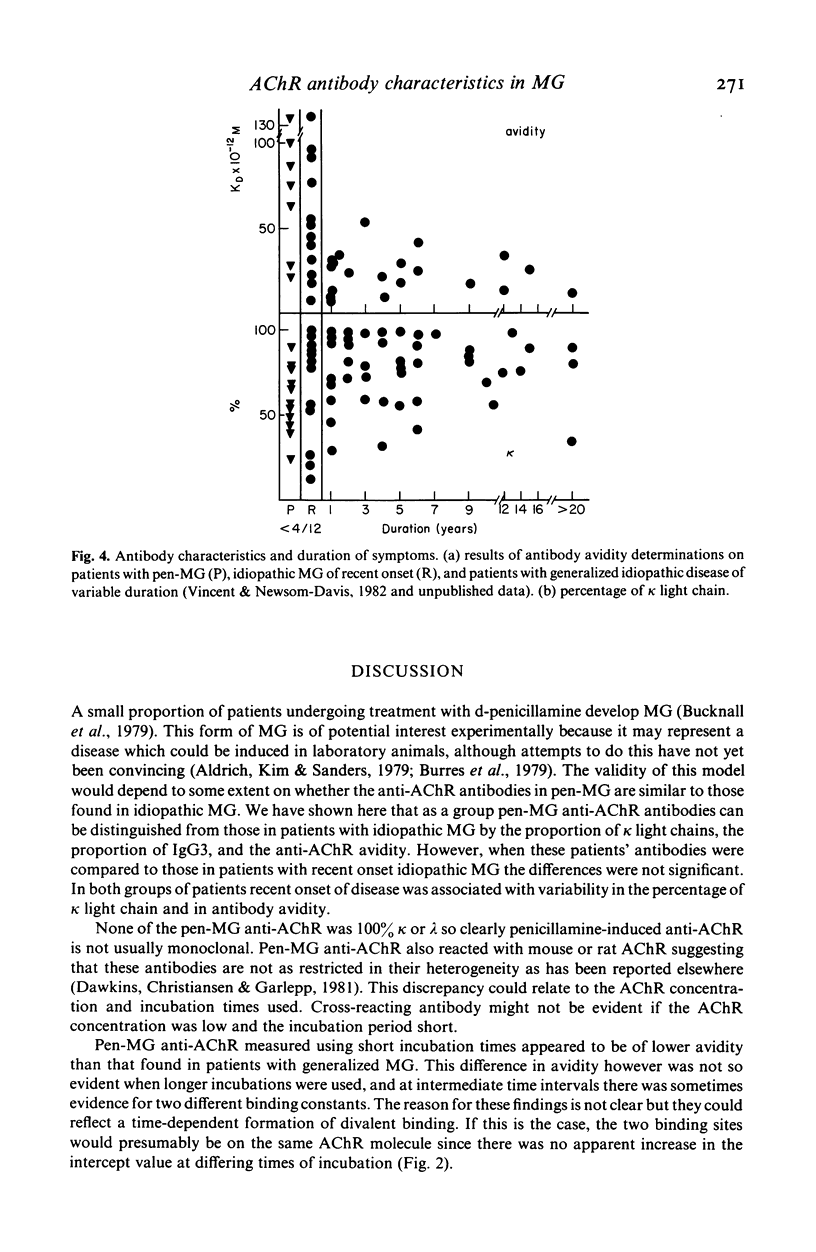
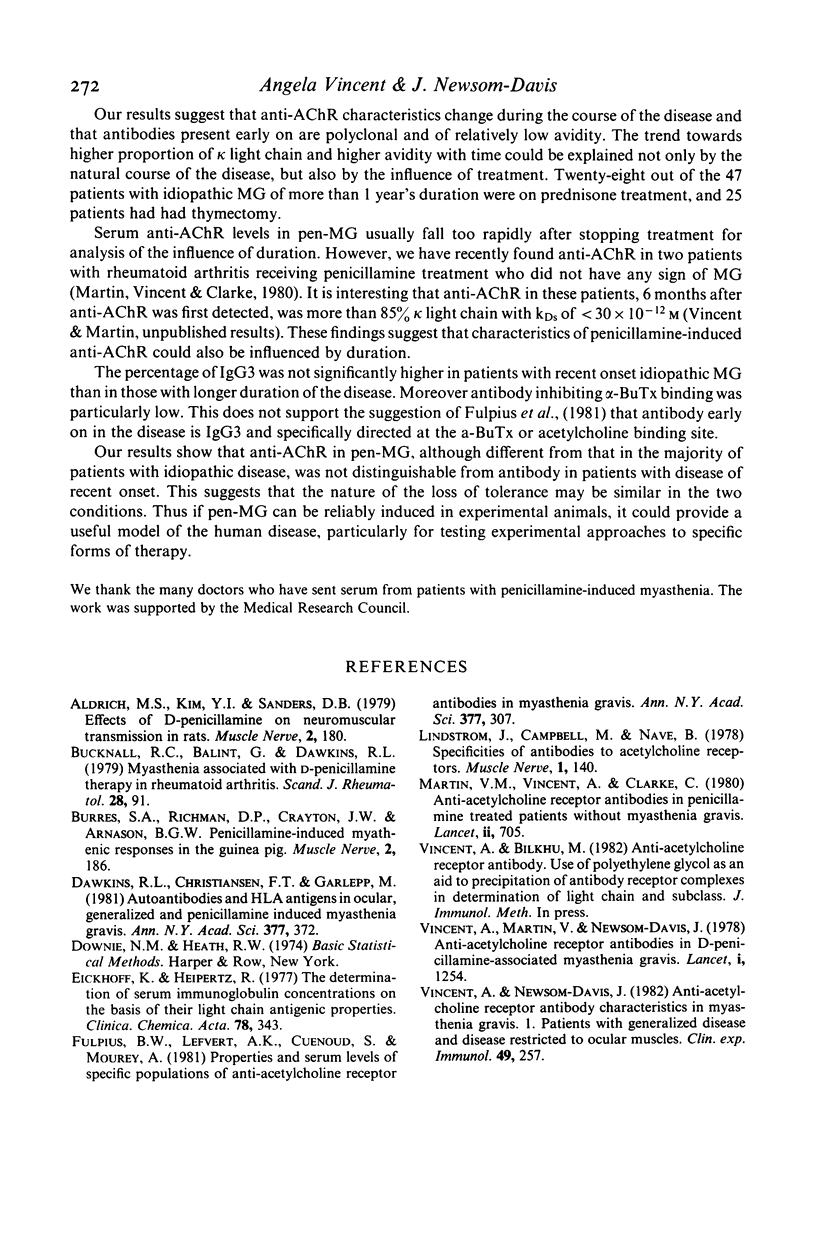
Selected References
These references are in PubMed. This may not be the complete list of references from this article.
- Aldrich M. S., Kim Y. I., Sanders D. B. Effects of D-penicillamine on neuromuscular transmission in rats. Muscle Nerve. 1979 May-Jun;2(3):180–185. doi: 10.1002/mus.880020305. [DOI] [PubMed] [Google Scholar]
- Bucknall R. C., Balint G., Dawkins R. L. Myasthenia associated with D-penicillamine therapy in rheumatoid arthritis. Scand J Rheumatol Suppl. 1979;(28):91–93. doi: 10.3109/03009747909108245. [DOI] [PubMed] [Google Scholar]
- Dawkins R. L., Christiansen F. T., Garlepp M. J. Autoantibodies and HLA antigens in ocular, generalized and penicillamine-induced myasthenia gravis. Ann N Y Acad Sci. 1981;377:372–384. doi: 10.1111/j.1749-6632.1981.tb33745.x. [DOI] [PubMed] [Google Scholar]
- Eickhoff K., Heipertz R. The determination of serum immunoglobulin concentrations on the basis of their light-chain antigenic properties. Clin Chim Acta. 1977 Jul 15;78(2):343–349. doi: 10.1016/0009-8981(77)90326-6. [DOI] [PubMed] [Google Scholar]
- Fulpius B. W., Lefvert A. K., Cuénoud S., Mourey A. Properties and serum levels of specific populations of anti-acetylcholine receptor antibodies in myasthenia gravis. Ann N Y Acad Sci. 1981;377:307–315. doi: 10.1111/j.1749-6632.1981.tb33740.x. [DOI] [PubMed] [Google Scholar]
- Lindstrom J., Campbell M., Nave B. Specificities of antibodies to acetylcholine receptors. Muscle Nerve. 1978 Mar-Apr;1(2):140–145. doi: 10.1002/mus.880010206. [DOI] [PubMed] [Google Scholar]
- Martin V. M., Vincent A., Clarke C. Anti-acetycholine receptor antibodies in penicillamine treated patients without myasthenia gravis. Lancet. 1980 Sep 27;2(8196):705–705. doi: 10.1016/s0140-6736(80)92753-1. [DOI] [PubMed] [Google Scholar]
- Vincent A., Newsom-Davis J. Acetylcholine receptor antibody characteristics in myasthenia gravis. I. Patients with generalized myasthenia or disease restricted to ocular muscles. Clin Exp Immunol. 1982 Aug;49(2):257–265. [PMC free article] [PubMed] [Google Scholar]
- Vincent A., Newsom-Davis J., Martin V. Anti-acetylcholine receptor antibodies in D-penicillamine-associated myasthenia gravis. Lancet. 1978 Jun 10;1(8076):1254–1254. doi: 10.1016/s0140-6736(78)92481-9. [DOI] [PubMed] [Google Scholar]


